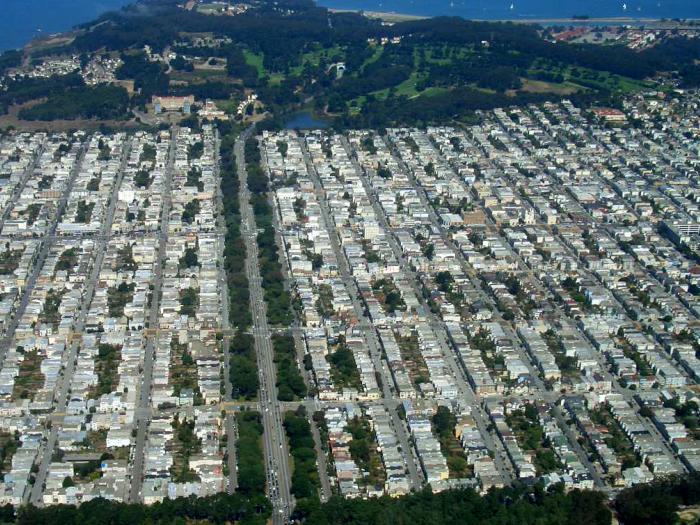
Urban Forest Plan
Project Status: Completed
The Urban Forest Plan envisions a greener and healthier San Francisco where trees grow and thrive on the City’s streets.
UPDATE (November 2016)
Voters pass Proposition E by 79% to shift maintenance responsibility of street trees and root-damaged sidewalks from property owners to the City. The measure also provides funding for trees on public schoolyards.
Can you imagine a San Francisco without trees?
Developed in collaboration with San Francisco Public Works, the Urban Forestry Council, and Friends of the Urban Forest, the Urban Forest Plan (Phase 1: Street Trees) provides a long-term vision and strategy to improve the health and sustainability of the City’s urban forest.
Adopted by the Board of Supervisors in 2015, the Plan identifies policies and strategies to create an expanded, healthy, and thriving street tree population for all of San Francisco (download the Urban Forest Plan (Phase 1) Summary or the Full Report).
Importance of Trees
Healthy tree-lined streets are a key component of our urban forest. An estimated 105,000 trees grow along San Francisco’s streets. These trees contribute to a more walkable, livable and sustainable city. They remove pollutants from air and water. They create greener and more vibrant neighborhoods. They make streets more enjoyable to walk and shop along. Street trees connect us to nature and enhance the quality of our daily lives. The urban forest returns millions of dollars annually in benefits 1. See sidebar for more info on the benefits of trees.
Why a Plan Now?
Without a comprehensive vision for the care and management of the City's street trees, their fate is uncertain. The Urban Forest Plan seeks to address the following threats to the long-term health of San Francisco's street trees:
- Small and Shrinking Tree Canopy
San Francisco has one of the smallest tree canopies of any major U.S. city.
San Francisco was naturally a non-forested environment with fewer trees than east coast or other forested environments. Today, the City’s urban tree canopy (13.7%), measured by the amount of land covered by trees when viewed from above, is one of the smallest of any large U.S. city – less than Los Angeles (21%), Chicago (17%) and New York City (24%) – and unfortunately, it’s on the decline. New plantings are not keeping pace with tree removals and mortality, while tens of thousands of potential street tree planting spaces remain empty. A concentrated effort to add new street trees will help stem the decline of the urban forest while bringing highly visible greening benefits to our neighborhoods. - Inadequate Maintenance Funding and Fragmented Maintenance Structure
Trees in San Francisco face a number of challenges due to historic underfunding and inadequate maintenance.
Since 2007, the urban forestry budget has decreased dramatically, bringing the average pruning cycle for City-maintained trees from 5 years to 12 years per tree. The City is transferring maintenance responsibility for tens of thousands of trees to property owners, creating an inefficient, confusing, and costly maintenance program that is compromising tree health and safety and diminishing the social and environmental benefits that street trees provide. This controversial and fragmented maintenance structure has raised concerns about the long-term health and future of the City’s street trees. Identifying stable funding sources is essential to restoring the health of our urban forest. UPDATE: Effective July 2017, StreetTreeSF now handles tree maintenance. - Harsh Growing Environment
San Francisco’s streets can be a difficult place for trees to take root and flourish.
Narrow sidewalks, compacted soil, drought, neglect, improper care, underground utilities, and vandalism make it difficult to survive and reach maturity. San Francisco’s urban forest has great potential to expand by embracing alternative methods to green our streets, buildings, and public spaces; especially where tree planting is not currently feasible. Embracing a range of greening methods on public and private property can provide significant potential to expand our urban forest.
Key Recommendations
The Urban Forest Plan (Phase 1: Street Trees) contains a long-term vision and strategy for the city's street trees. The Plan includes the following key recommendations:
- RECOMMENDATION #1: Maximize the benefits of street trees
Street trees should be recognized for their ability to help achieve targeted environmental and public health goals. The City should identify which species perform best to maximize the environmental, economic, and social benefits of San Francisco’s trees. This information can be used by forest managers and property owners to more carefully select and plant trees, thereby maximizing the benefits most relevant to the City. - RECOMMENDATION #2: Increase the street tree population with 50,000 new trees by 2035
The Plan calls for planting 50,000 new street trees over the next 20 years: from 105,000 to 155,000. These new trees will help stem the decline of the urban forest, help create a more equitable distribution of tree canopy, and reduce greening inequities in different areas of the City. An associated funding and maintenance program is needed to carry out this expanded planting program and ensure their long-term health. - RECOMMENDATION #3: Establish & fund a citywide street tree maintenance program
Creating a citywide street tree maintenance program would require the City to get serious about establishing long-term funding solution for our trees. Privately maintained street trees generally fare worse than publicly maintained trees. The Plan recommends relieving homeowners from the responsibility of maintenance and repairing tree-related sidewalk damage by centralizing responsibility for 100 percent of San Francisco’s street trees under the San Francisco Public Works through a fully funded municipal street tree program. Possible funding tools include general obligation bonds, an assessment district, parcel tax, and General Fund revenue. - RECOMMENDATION #4: Manage street trees throughout their entire life-cycle
The Plan recommends managing San Francisco’s street trees throughout their entire life-cycle be creating an interdependent urban forestry operation. By minimizing waste, reducing travel distances, and providing second-life opportunities for locally grown urban wood, San Francisco can become a model of 21st century urban natural resource management. Components of the Plan include developing a street tree nursery to grow street trees locally through a community partnership; determining a tree removal and succession plantings strategy; and creating an urban wood re-use program to geberate second-life products from trees removed from City streets.
Find a more detailed summary of the Plan’s primary recommendations here.
Notes
1. Assessing Urban Forest Effects and Values: San Francisco’s Urban Forest, United States Department of Agriculture-Forest Service, Northern Research Station (2007).
Completed Work
Urban Forest Plan (Phase 1: Street Trees)
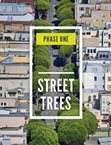 The Plan (adopted 2015) identifies key recommendations and comprehensive strategies for the management and maintenance of San Francisco's street trees.
The Plan (adopted 2015) identifies key recommendations and comprehensive strategies for the management and maintenance of San Francisco's street trees.
Street Tree Financing Study
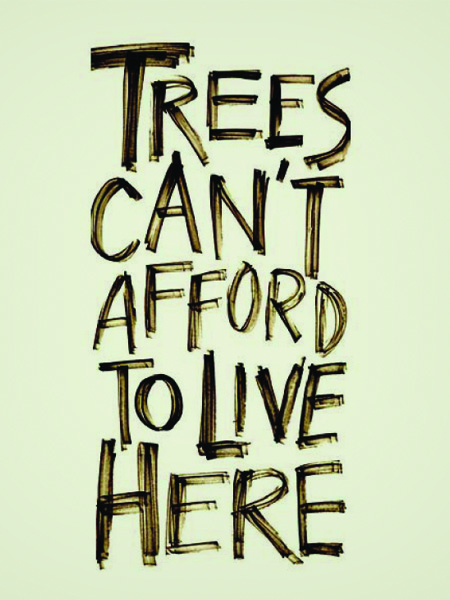 In an effort to address the City's declining urban forestry budget, the Planning Department commissioned an economic consultant, AECOM, to conduct a Street Tree Financing Study. The Study evaluates the costs associated with street tree planting and maintenance and identifies a range of potential funding strategies. The AECOM study is a starting point for a continuing dialogue on how to boost funding for trees and grow San Francisco's urban forest.
In an effort to address the City's declining urban forestry budget, the Planning Department commissioned an economic consultant, AECOM, to conduct a Street Tree Financing Study. The Study evaluates the costs associated with street tree planting and maintenance and identifies a range of potential funding strategies. The AECOM study is a starting point for a continuing dialogue on how to boost funding for trees and grow San Francisco's urban forest.
Street Tree Life-cycle Management
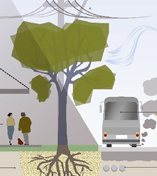 The Urban Forest Plan (Phase One: Street Trees) recommends managing street trees through all of their life stages. Components of a Street Tree Life-Cycle Management Program include a street tree nursery, tree removal and succession plan and urban wood re-use.
The Urban Forest Plan (Phase One: Street Trees) recommends managing street trees through all of their life stages. Components of a Street Tree Life-Cycle Management Program include a street tree nursery, tree removal and succession plan and urban wood re-use.
EveryTreeSF: Street Tree Census
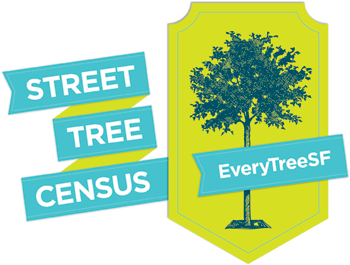 EveryTreeSF is a project to map and record every street tree in San Francisco. We've recorded each tree's exact location, species and condition. We've also identified locations where new street trees could be planted. For more information on the City's first citywide street tree census.
EveryTreeSF is a project to map and record every street tree in San Francisco. We've recorded each tree's exact location, species and condition. We've also identified locations where new street trees could be planted. For more information on the City's first citywide street tree census.
Next Steps
Urban Forest Plan (Phases 2&3) - stay tuned for more information!
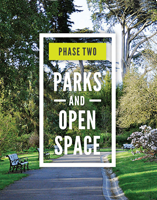
 The Planning Department is scoping future phases of the Urban Forest Plan that will address the needs of trees in parks and open spaces as well as trees on private property.
The Planning Department is scoping future phases of the Urban Forest Plan that will address the needs of trees in parks and open spaces as well as trees on private property.
San Francisco's street trees create a positive impact on the City by providing the following benefits:
The Environment
- Filter air pollution
- Reduce stormwater runoff
- Slow climate change by storing carbon (CO2)
- Create habitat for birds, animals and insects
- Aid in local food production
The Economy
- Decrease demand on City’s infrastructure (sewer and energy systems)
- Boost economic activity in commercial areas
- Reduce building heating / cooling costs
- Increase property values
Society
- Create green spaces to enjoy and play
- Improve public health - mental and physical
- Calm traffic and promote pedestrian and bicyclist safety
- Muffle noise from freeways and other sources
- Contribute to reduced crime rates 2
Notes
2. The Relationship Between Tree Canopy and Crime Rates Across an Urban–Rural Gradient in the Greater Baltimore Region, University of Vermont, Rubenstein School of Environment and Natural Resources (2012). Environment and Crime in the Inner City: Does Vegetation Reduce Crime?, Human-Environment Research Laboratory University of Illinois, Urbana-Champaign (2001).
Jesus Lozano
Urban Forestry Coordinator
San Francisco Environment Department
(415) 355-3734
Jesus.Lozano@sfgov.org
